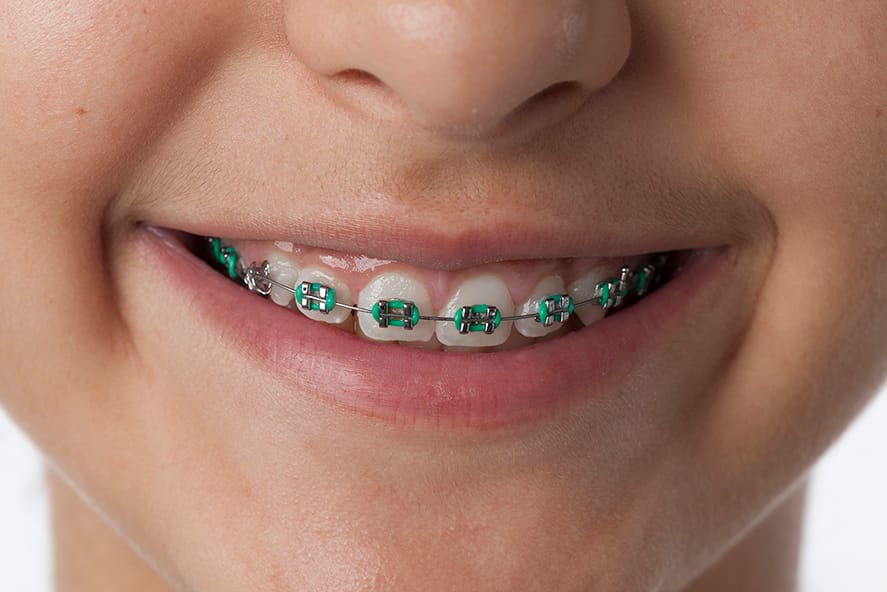As your child grows and permanent teeth come in, they may experience crowding of the teeth, which can change your child’s smile and facial shape, cause discomfort, or pose trouble with their gums and bite.
Below, we’ve answered important questions such as when it’s time to see a dentist or orthodontist for a consultation, what age your child should be, what to expect at your first appointment, and after care.
Why might my child need braces?

As little mouths grow, a few things may happen which need attention. These include:
- Overcrowding of teeth
- Teeth overlapping
- A misaligned bite
- Overbite or underbite
- Crooked teeth
Your dentist and oral health therapist may notice these changes or trouble areas during a regular check-up; however, you may also pick these up yourself.
There is no minimum age at which a child should have their first orthodontic appointment; however, we find it’s usually around the age of seven when a child’s permanent teeth start to come in. This is when alignment issues begin to show up. They are easiest to address whilst your child is young and teeth are growing into their permanent positions.
What to expect at your first orthodontic consultation
A consultation will allow the dentist to explain treatment options to achieve straighter teeth and discuss any concerns you may have. Your dentist will:
- Review your child’s dental history
- Take x-rays and/or photos
- Take a mould of the teeth if needed
- Perform an oral exam
- Plan your child’s treatment
You’ll be informed about how long treatment will last, what’s involved, costing, and insurance. There are also brace-free options, such as Invisalign and Clear Correct, which can be discussed with the dentist and orthodontist.
The braces process
It’s normal for your child to be nervous about their orthodontic appointment. However, you can remind them that having braces is rarely painful. They will simply need to sit still whilst braces are fitted.
Depending on the recommended treatment, your child might be fitted with braces to the front or back of the teeth, with a clear removal tray, or, in some cases, head gear (which is usually only worn at night time).
They may experience some discomfort at first for a few days, which can easily be managed with some light pain relief tablets and by eating softer foods.
There will be adjustment appointments made every six weeks to encourage teeth to grow in the right direction. And after the treatment period is over, a final appointment will be made to remove the braces and reveal your child’s new straighter teeth!
Maintaining braces at home
Food can easily get stuck in the wires of braces and cause cavities. Some simple tips to help your child care for their braces include:
- Brushing teeth after all meals
- Avoiding food that can easily get stuck in teeth such as popcorn and gum (these can damage braces)
- If your child wears plastic aligners – these should be removed before eating
- If you notice a lose wire, take your child to the dentist or orthodontist immediately to avoid scratching the mouth
Careful orthodontic braces planning, maintenance, and patience will help set up your child’s mouth healthily for the future. Read more about our children’s dentistry services to find out how we can help take better care of your child’s oral health.




